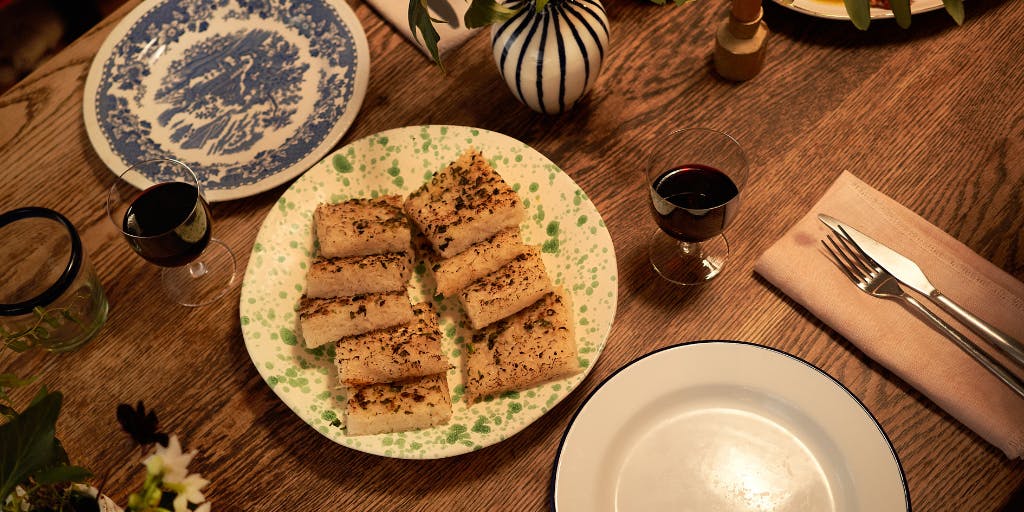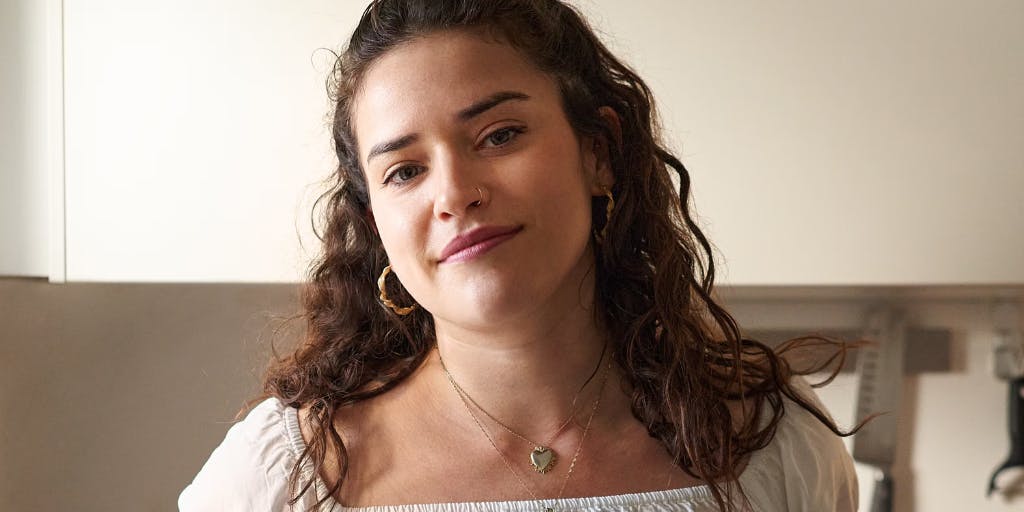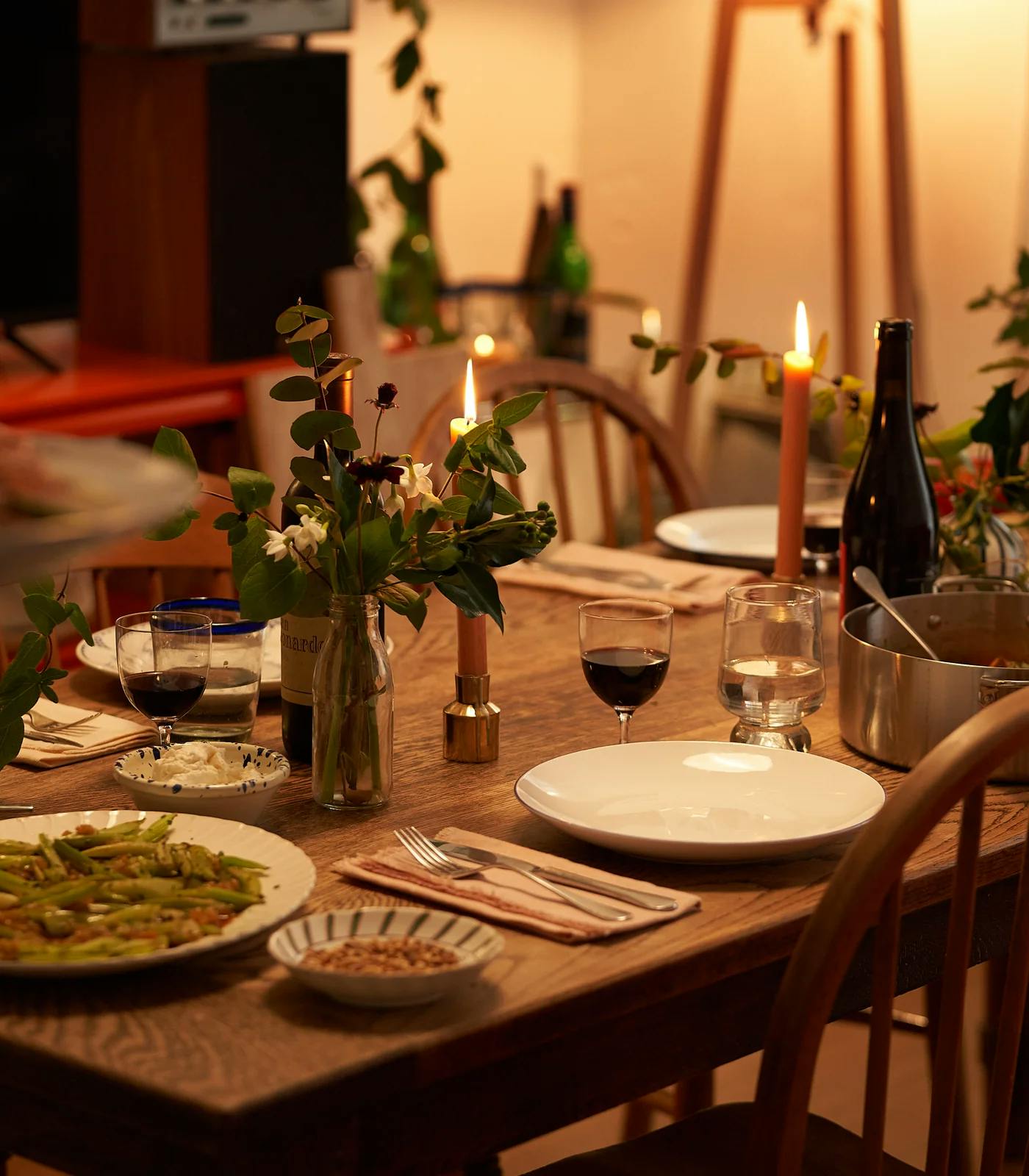

Ixta Belfrage
For chef and recipe developer Ixta Belfrage, a life well lived is time in the kitchen, cooking for pleasure, soulfully and instinctively, uncertain of what flavours might unfold. Ixta takes us on the journey of her life and career surrounded by food: market stall tacos, Ottolenghi’s Test Kitchen, lasagne for comfort, her first cookbook, the magic of Brazilian porridge and the pure joy that can come from creating something completely new. Tuck in!

Serves 4
Ingredients:
- 60g golden (or regular) raisins
- 1 medium celery bunch, with the leaves
- 1 tbsp olive oil
- >¼ tsp fine salt
- 25g pine nuts
- ¼ tsp urfa chilli flakes
- ¼ tsp pul biber (or use Aleppo chilli/red pepper flakes)
- 125g ricotta (optional)
- 5g basil leaves
- 1 tbsp chives, finely chopped
- Dressing
- 2½ tbsp soy sauce or tamari
- 2 tbsp lemon juice
- 2 tbsp olive oil
- 1 tbsp maple syrup or honey
- 1 medium garlic clove, very finely chopped
- Black pepper (about 8 twists)
Step 1. Put the golden raisins in a bowl and cover with boiling water. Leave to soak while you fry the celery.
Step 2. Remove the leaves of the celery. Set aside 10g of the brightest leaves in a small bowl. Cut 400g of the stalks into 4cm-long pieces (cut any of the wider stalks in half lengthways, first). Toss the celery stalk pieces together with the oil and fine salt. Use any remaining celery in another recipe.
Step 3. Place a large frying pan on a medium-high heat. Toast the pine nuts for 2½ - 3 mins, or until nicely browned. Transfer pine nuts to a plate. Add the celery to the pan and cook for 4 mins undisturbed. Toss the celery and cook for another 5-6 mins undisturbed, or until the celery is nicely charred in places. Take the pan off the heat and cover it with a plate or lid, so the celery softens a little in the residual heat.
Step 4. Mix all the dressing ingredients together. Drain the raisins, then finely chop them and add to the dressing. Add the cooked celery and leave to steep for 5-10 mins.
Step 5. Stir through half each of the celery leaves, basil and chives. Transfer the celery and dressing to a plate and sprinkle over the urfa and pul biber. Spoon over the ricotta if using, then finish with the remaining celery leaves, basil, chives and pine nuts.
Follow Ixta: @ixta.belfrage